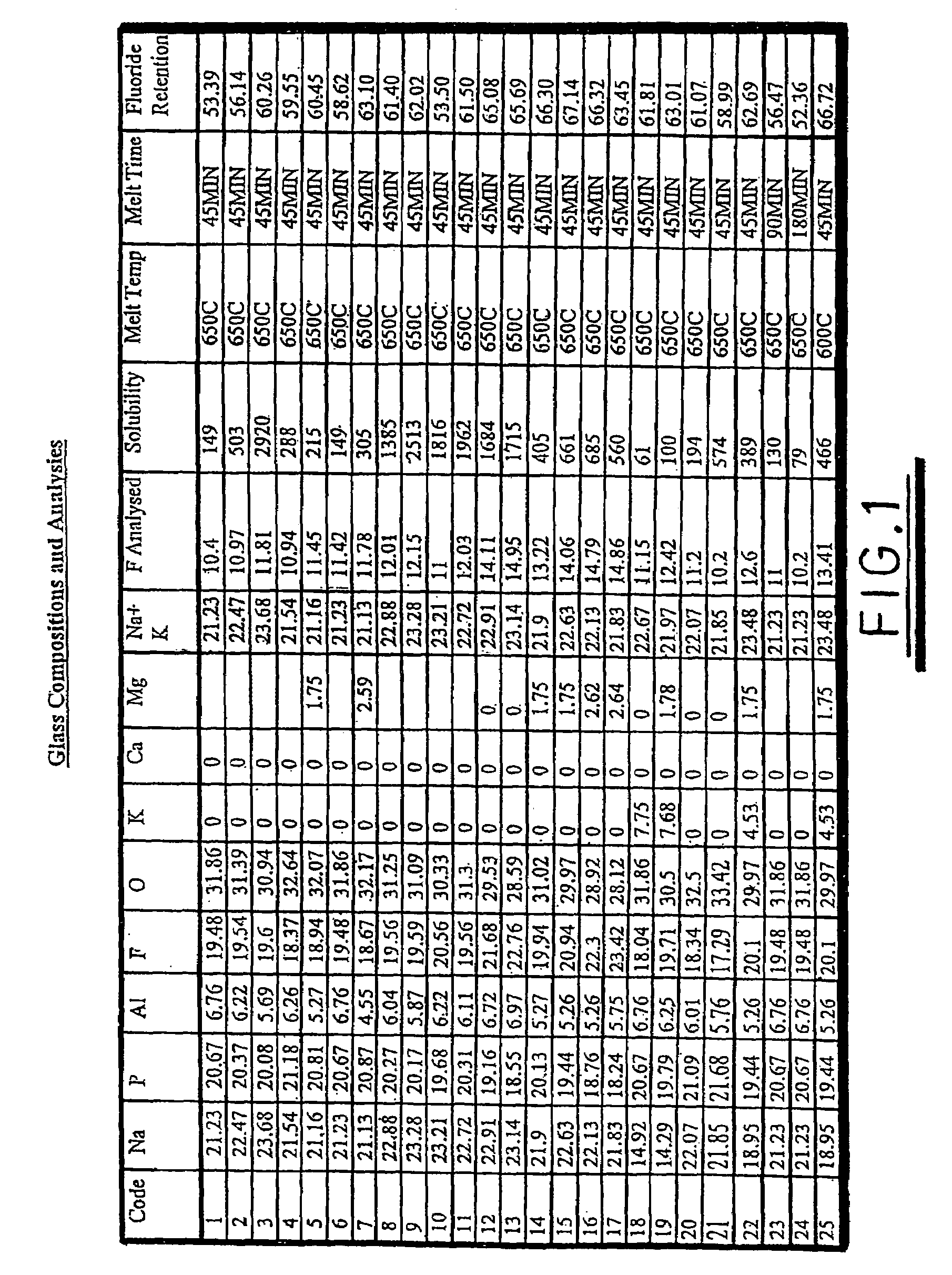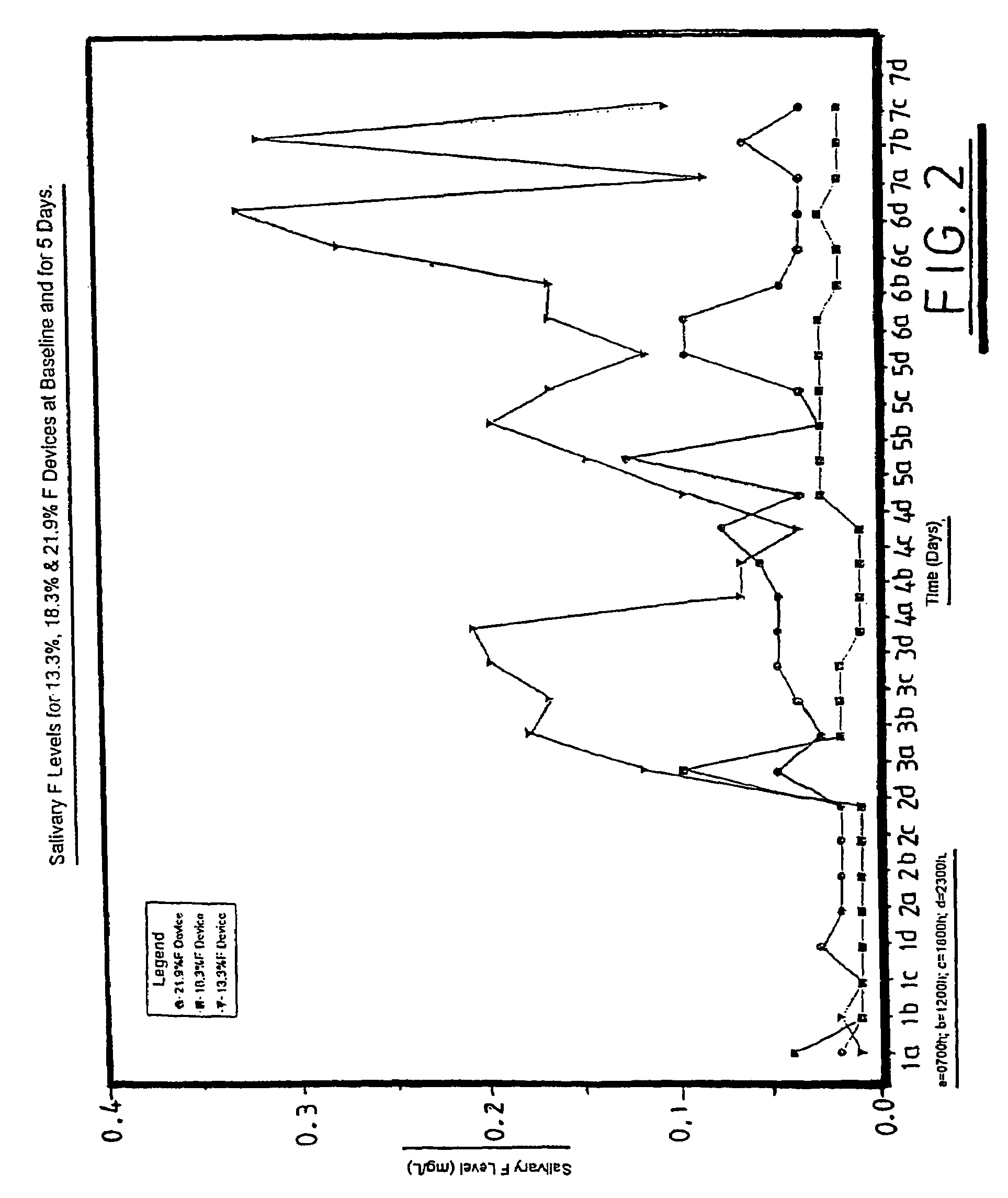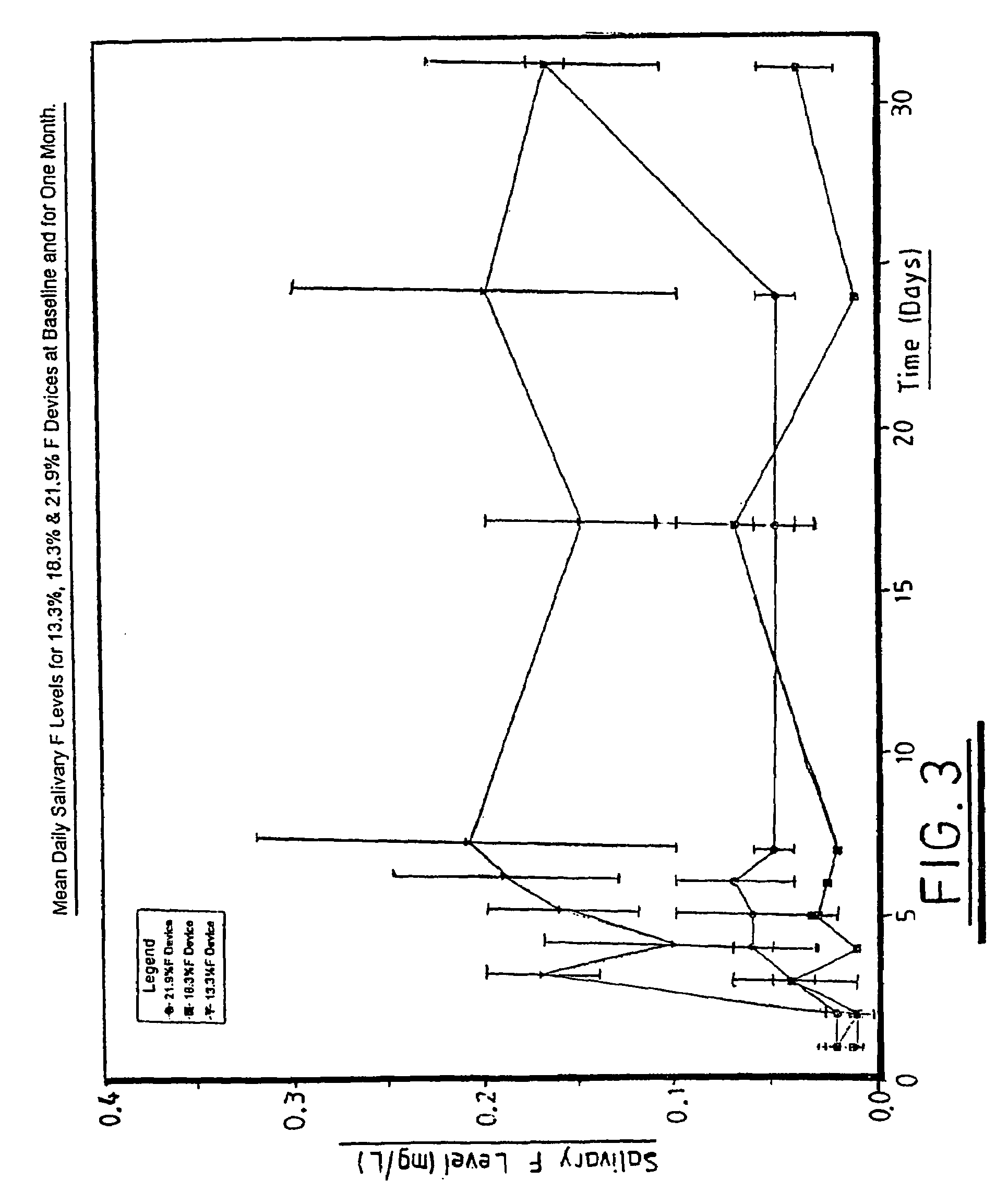Glass composition
a technology of glass and composition, applied in the field of glass composition, can solve the problems of fractured teeth, no device has proved to be suitable for use, and easy damage, and achieve the effect of improving treatment and/or preventing dental caries
- Summary
- Abstract
- Description
- Claims
- Application Information
AI Technical Summary
Benefits of technology
Problems solved by technology
Method used
Image
Examples
example 1
[0039]FIG. 1 of the accompanying drawings illustrates the composition parameters of glass compositions according to the present invention, labeled 1–25 respectively. The percentage fluoride retained by each composition was calculated from determining the theoretical fluoride percentage of each sample and comparing this to the analyzed level of fluoride found after the glass had been melted. The compositions were recorded as weight percentages of the elements. This was done to ensure the most accurate recording of percentage of fluoride retained. The method often used that involves recording the elements present as oxides and then recording the fluoride as a separate element is incorrect as the fluoride ions are taking the place of oxygen in the glass matrix. Assigning the fluoride ion to any particular element is also incorrect, as the actual location of the fluoride ion is unknown. The method used herein was therefore preferred and conversion to other older systems is easily achiev...
example 2
[0041]The percentage of fluoride released into saliva following attachment of a glass composition of the present invention to a tooth was investigated.
[0042]The batch components using compositions according to the present invention were thoroughly mixed to ensure a homogeneous melt and loaded into platinum crucibles. The crucibles were then placed in an electric melting furnace at temperatures from 600–650° C., for times of up to 60 minutes to achieve good melting. The crucibles were removed from the furnace and the glass cast onto a molding plate containing a number of circular holes of 4 mm in diameter and 6 mm in depth. The glass was rolled to force it into these cavities and when solidified it was removed from the plate and transferred to an annealing oven to slowly cool and remove any residual stress.
[0043]Before use, the devices were smoothed of any rough edges with a sharp diamond burr. Three tests were carried out with human subjects and the results are reported in Tables I–...
example 3
[0062]An investigation was conducted to determine the salivary fluoride levels that could be achieved by increasing the percentage fluoride in three examples of glass compositions according to the present invention. The three glass devices were made with either 13.3%, 18.3% or 21.9% retained fluoride and had the following compositions:
[0063]
RetainedFluoride:13.3%18.3%21.9%Na21.2319.3819.68P20.6719.5017.84Al6.768.949.90F19.4822.1225.08O31.8630.0627.49
[0064]The average weight of the glass devices was 82.25 mg and the quantity of fluoride in the three devices was 11.94, 15.05 and 18.01 mg F for the devices respectively. Three adult volunteers used a fluoride-free toothpaste for two weeks prior to and for the duration of the study. The glass devices were attached to the buccal surfaces of maxillary first permanent molars using an acid etch composite resin technique. Saliva samples were collected in 30 ml plastic specimen containers for two minutes as whole resting saliva, four times per...
PUM
| Property | Measurement | Unit |
|---|---|---|
| weight percent | aaaaa | aaaaa |
| temperatures | aaaaa | aaaaa |
| melting temperature | aaaaa | aaaaa |
Abstract
Description
Claims
Application Information
 Login to View More
Login to View More - R&D
- Intellectual Property
- Life Sciences
- Materials
- Tech Scout
- Unparalleled Data Quality
- Higher Quality Content
- 60% Fewer Hallucinations
Browse by: Latest US Patents, China's latest patents, Technical Efficacy Thesaurus, Application Domain, Technology Topic, Popular Technical Reports.
© 2025 PatSnap. All rights reserved.Legal|Privacy policy|Modern Slavery Act Transparency Statement|Sitemap|About US| Contact US: help@patsnap.com



